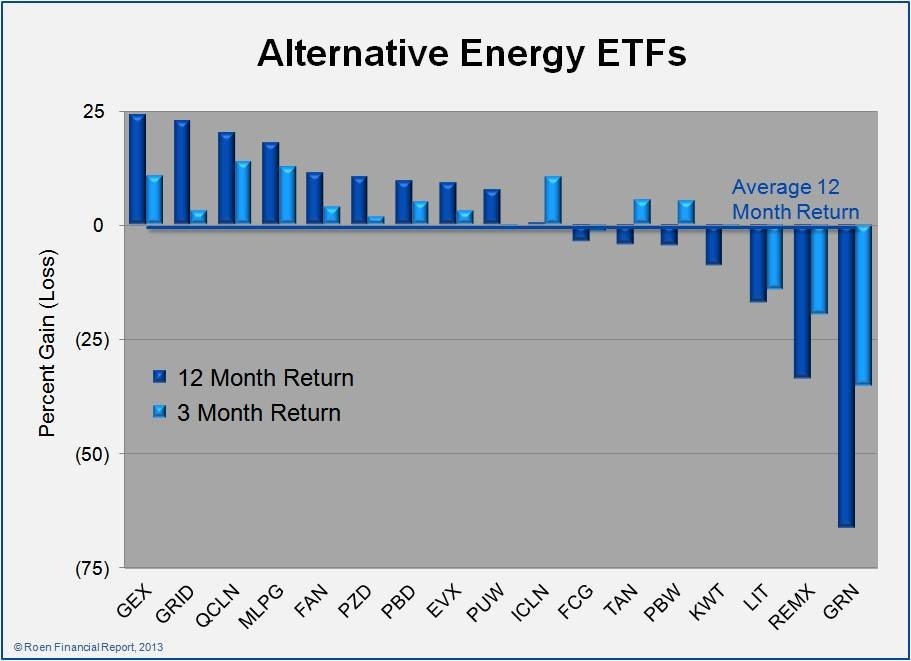ETF Alternatives to the Most Popular Mutual Funds
Post on: 10 Июль, 2015 No Comment

by Daniela Pylypczak-Wasylyszyn on June 11, 2014 | Updated June 12, 2014
With over 1,600 exchange-traded funds on the market, investors can easily tap into nearly every corner of the investable universe. Prior to ETFs, investors turned to mutual funds to gain diversified exposure to both equity and bond markets. In this piece, we take a look at the five largest and most popular mutual funds, highlighting compelling ETF alternatives [Be sure to check out our Free Mutual Fund to ETF Converter Tool ].
PIMCO Total Return Fund Institutional Class (PTTRX)
This ultra popular mutual fund is managed by the Bond King himself, Bill Gross. Launched in 1987, PTTRX has amassed over $146 billion in net assets under management. The funds objective is to seek maximum total return, consistent with preservation of capital and prudent investment management. PTTRXs portfolio consists of intermediate-term, investment grade bonds; the majority of which are U.S. government related.
Though this fund charges an expense ratio of only 0.46%, institutional investors must have a minimum of $1,000,000 to invest.
ETF Alternative: In one of the most highly-anticipated launches in the ETF industry, PIMCO launched an exchange traded fund version of its legendary Total Return mutual fund in 2012. The Total Return Exchange-Traded Fund (BOND ) is also managed by Bill Gross, and follows the same objective as its mutual fund counterpart. Unlike PTTRX, investors dont need a minimum investment of $1 M dollars to tap into the bond gurus expertise. BOND does, however, charge a slightly higher expense ratio of 0.55%.
While both PTTRX and BOND took a steep hit in 2013, the ETF version fared a little better, logging in a 3.73% loss on the year compared to PTTRXs -4.72% loss. As the chart depicts, both funds essentially mimic each other, as would be expected.
Vanguard Total Stock Market Index Fund Investor Shares (VTSMX)
Making its debut in 1992, this Vanguard fund is designed to provide investors with exposure to the entire U.S. equity market, including small-, mid-, and large-cap growth and value stocks. VTSMX holds roughly 3,700 individual securities, with exposure to technology, financials, industrials, consumer, health care, and oil & gas sectors.
The fund charges a net expense ratio of 0.17%. The minimum to invest is $3,000.
ETF Alternative: Vanguard offers an exchange-traded version of its fund, the Total Stock Market ETF (VTI ).VTI follows the same index as its mutual fund counterpart, making it an ideal pick. Furthermore, VTI charges only 0.05%, and can be traded commission free on TD Ameritrade and Vanguard platforms.
Since both funds track the same index, their performance history is obviously the same. In 2013, both logged in an over 27% gain.
Fidelity Contrafund (FCNTX)
This Fidelity offering made its debut in 1967, and focuses on capital appreciation. To achieve its objective, FCNTX focuses on securities whose value Fidelity believes is not fully recognized by the public. The resulting portfolio consists primarily of large cap growth stocks, many of which are information technology, consumer discretionary, financial, and health care stocks.
FCNTX charges a net expense ratio of 0.67%. The minimum to invest is $2,500.
ETF Alternative: There are over 40 ETFs that offer exposure to large-cap growth stocks, one of which is Vanguards Growth ETF (VUG ). VUGs portfolio consists of over 370 individual securities. Like FCNTX, VUG is heavily invested in tech, consumer cyclical, and health care stocks. VUG, however, charges only 0.09% and can be traded commission free on TD Ameritrade and Vanguard platforms.
In 2013, both funds logged in impressive returns, though VUG managed to outperform FCNTX by roughly 7%. Since the funds offer similar exposure, their performances are quite similar, as the chart depicts.
The Income Fund of America Class A Shares (AMECX)
This mutual fund focuses on providing current income, while secondarily striving for capital growth. AMECX invests in both stocks and bonds, as well as preferred stocks. The funds portfolio allocates more than 70% to both U.S. and foreign common stocks, roughly 15% to U.S. bonds, and about 3% to non-U.S. bonds. In its equity holdings, pharmaceuticals are given the biggest weight.
AMECX charges an expense ratio of 0.58% and a load of 5.75%. The minimum to invest is $2,500 [see Understanding the Mutual Fund vs. ETF Cost Difference ].
ETF Alternative: There are a little over 20 exchange-traded funds that are classified as diversified portfolio . iShares Moderate Allocation ETF (AOM ) is a great alternative to AMECX. The ETF is moderately weighted towards U.S. bonds, but also invests in U.S. and non-U.S. equities. AOM charges 0.31%.
In 2013, AMECX outperformed AOM by roughly 6%, which perhaps is not surprising given AOMs heavier allocation to fixed income securities.
The Growth Fund of America Class A Shares (AGTHX)
Another American Funds offering, AGTHX focuses on providing growth of capital. The mutual fund invests roughly 80% in U.S. equities, and 11% in foreign equities. Only about 0.1% is invested in U.S. bonds. In terms of sector exposure, AGHTXs largest holdings are biotechnology, oil & gas, and internet companies.
AGTHX charges a net expense ratio of 0.70% and a load of 5.75%. The minimum to invest is $2,500.
ETF Alternative: iShares Aggressive Allocation ETF (AOA ) is a good alternative to AGTHX. Like the mutual fund, AOA is heavily invested in equities, but also provides exposure to U.S. bonds. The ETFs equity component allocates the majority of its assets to financials, IT, industrials, and consumer discretionary securities. AOA charges only 0.32%.
During the first quarter of 2013, both funds logged in similar performances. For the year, however, AGTHX outperformed AOA by roughly 4%. AOA offers a significantly more attractive yield than AGTHX.
The Bottom Line
While there may not always be a perfect substitute for certain mutual funds, the vast array of ETF options offers investors plenty of alternatives to the often pricer mutual funds.














